Streaming tabletop games has been popular for years, but has undergone a surge of popularity during the COVID-19 quarantine. We’re not able to get our normal gaming groups together in person, many members of the community are out of work, and we’re all looking for a way to connect. Some of us are spending more time watching streams, others are using virtual tabletops to keep our groups together, and still others are taking the bold step of starting their own stream. So we went to many of the leading tabletop streamers out there and asked them for advice for aspiring streamers.
Today is part one of our interview with one of the minds behind the Dungeons of Drakkenheim stream and the D&D YouTube channel Dungeon Dudes – Monty Martin. This interview was recorded live via Zoom, so it’s been edited down for clarity and space. This is part one – part two will focus more on technical aspects.
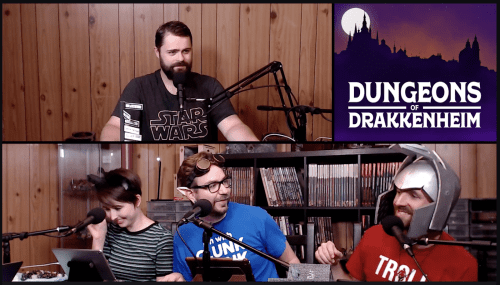
CGT: How long have you been streaming?
Monty Martin: We had done a few smaller one off things, but we really got started with Dungeons of Drakkenheim back in October of 2018. We had already been producing content on YouTube for over a year. Drakkenheim was something we started in response to people asking to watch our games. So we had no intention of doing a streamed game until the voice from our audience on YouTube was really loud asking for it.
We were starting to see these comments on a daily basis and prior to that, we had not considered streaming. We really didn’t think there was going to be an audience to watch, we’re like “Who cares?” But then it became a viable thing and, by that time, one of the critical things that linked up with it is we became a YouTube Partner and our Patreon picked up steam and so we had the capital to invest in the equipment to stream properly.
CGT: What is the appeal, in your mind, of streaming? Why do you think your fans so wanted to see your games?
Monty: First of all, I think that people are just ravenous for stories. And I think that for Dungeons and Dragons in particular, one of the things people love about watching D&D streams is that it combines three genres in a really, really interesting way. It’s part radio drama, it’s part improvised comedy, and it’s part sporting event. Rather than it just being us, you know, having fun rolling dice playing D&D, we knew we wanted to do something that was special.
Kelly [McLaughlin, the other “Dungeon Dude” – ed.] has a background in film production and I have a background in theatre production and I’m a PhD in Drama, Theatre, and Performance studies.
The thing that we know from listening to our audience that they love about our show is that we’re not professional voice actors; we’re not celebrities; we’re just regular people that happen to have a YouTube channel that some people started watching. And so our game feels very homespun. Our game is kind of like coming home for grandma’s cooking style D&D, whereas other streams have some big names involved and are very aspirational. A lot of our audience tells us watching our game is like a game you can actually imagine – it’s like my D&D game could be like this. People like that authenticity.
We were very deliberate in the way we set up our cameras as well. We want it to feel like, come over to my place and play some D&D with us.
CGT: What are some of your favorite streams by other people that you enjoy?
Monty: I have to confess I do not watch a lot of other streams; it’s by and large a lot of other D&D streams specifically. I actually find more inspiration from watching other content creators who are not doing D&D content, seeing what they’re doing, and applying that to our fields. So, as an example of that, I’ve spent a bunch of time watching Civ VI streamers, like PotatoMcWhiskey, trying to understand more broadly what is compelling and interesting about these things. I also watch a lot of games of Warhammer. It’s really quite interesting to see what the non D&D streams are doing. There are some ideas in the non D&D world that are really applicable, like how some of the Warhammer streamers do battle cams and dice cams.
CGT: Where did the idea for Dungeons of Drakkenheim come from? Was that something you came up with specifically in order to stream it or was that something that you had percolating already?
Monty: I had a bunch of ideas in my notebooks, and as I was looking through different ideas and discussing things with Kelly. I came forward with a couple ideas like, I think these will work well in a streaming context. And then it was really speaking with the other players about what they were most excited about. In Drakkenheim, even though the setting is so important, the characters are so much more important. So it was critical that the overall themes of the campaign that Jill and Joe and Kelly [the players – ed.] could all get behind and be really invested in.
It never really occurred to me at the time what the other potential for the setting was going to be. Part of the reason why I chose it, actually, was that I had other worlds and ideas I had been thinking of that I was a little more precious about. I chose Drakkenheim because it was one that I was like “If people hate this, I’m not going to be heartbroken.” (laughs) It was also one where I could very unabashedly say “These were my influences,” like Drakkenheim, the name, is an homage to Mordheim from Games Workshop.
We thought at the beginning we were only going to do like six episodes, maybe twelve. Then by Episode Five, I was like “No, we love this. We’re going to keep doing this and it’s not going to stop.”
CGT: Were there any choices you made or changes you made to the setting specifically with an eye to it being streamed? Were there any creative choices you had to make so it would be appealing to, not just your circle of friends, but a broader audience?
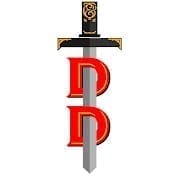
Monty: The biggest thing was that we avoided homebrew player options and stuff like that. We wanted things to be very by the book, D&D 5E rules wise. One of the other things conceptually that I did on purpose was that Drakkenheim is an urban setting; the whole adventure happens in one city. It meant I didn’t have to go ahead and design an entire world; I could be really vague about the entire world because everything was just focused on what was happening in this one location. So as a dungeon master, it kind of put a container on how expansive the whole thing could become, which I find is a generally great conceit. I really like that focus and the campaign really benefited from having a really, really focused metaplot to it, but that’s a principle I don’t think is unique.
CGT: I feel like, as a viewer, you really get to know the city in a sense and get invested in these factions. You can follow what’s going on, even when the map isn’t on screen. I’ve gotten to the point where I’ve started learning, okay, I know roughly where the clock tower is, I know roughly where the gardens are.
Monty: It just works so well. I think containing the world in this way prevents the pacing problems that other streams can run into, especially around things like downtime and travel time. In Drakkenheim, I really like to minimize the amount of time it takes for players to get control of the game’s flow and get control of the action. My style as a Dungeon Master and, I think, a style that works well for streamed games is that, the more control the players have over the flow of the narrative and the course of the action, and the more awareness everybody has of the pacing of the action, it really is to the benefit of the stream as a whole. I think one of the biggest lessons I’ve learned from streaming D&D is just how important pacing is in the end.
We have this framework in our streams of, like, we have a fifteen minute break halfway through the stream, and the stream is three hours long. So in my mind, I have to have something exciting in the first half. In the second half, we need to get through that exciting thing. Streaming has really taught me a lot about how to keep the pacing of the game session interesting. Within twenty to thirty minutes, we want something interesting happening in the stream to get the audience excited, but that actually translates to excitement at the table, because nobody’s waiting around for a bunch of things to happen. We get right into it.
CGT: So, you’re pacing it almost like a TV show where you’re trying to have your cliffhanger or something right before the commercial break, and kind of pacing around that.
Monty: Every episode, every session has to move this plot forward in a meaningful way. I have the benefit of a group of players who are really aware of that too. And so they’re co-conspirators in that regard. We don’t cheat by talking about what’s going on. We don’t do anything like scripting, but everyone knows we have to get the gas burning, you know.
CGT: Do you tell your players in advance some of what’s going to happen this session or are they going into it as blind as a player in a normal game?
Monty: After the camera stops, at the end of the game, we usually chat for about half an hour about what will happen the next week, just so we have a rough idea and orientation – let’s get oriented with what’s going on, let’s look up any rules we might be worried about. It’s not like “I need you guys to decide to do X, Y, and Z” – never. But we usually will leave the recaps and that kind of social stuff for when the camera is not rolling, to help focus what is happening in front of the camera.
It’s especially relevant at some moments in the campaign where the episode ended with a very clear plot resolution, so that’s where we would have a more intense discussion afterwards or on Discord throughout the week where I’ll ask “So what do you guys want to do next time?” It helps us avoid a lot of the situations that I think are very common at a lot of game tables, where people spend an hour deciding what their character wants to do tonight, we would kind of let that decision making happen off screen.
We always play on a case by case basis, but because we use maps, miniatures, and terrain, I always need to have some knowledge of what’s going to happen that night so that I can prepare a few things. And I think all the players are used to a little bit of railroading in the sense of “OK, we can’t go totally off the map because he’s going to have something in mind.”
CGT: I did notice that a lot of the bookkeeping stuff is very much off screen on your stream. It’s like “OK, we’re not going to spend half an hour bickering about ‘Do we buy half plate or full plate armor.’” You seem to be handling it off screen and when they come in, OK, we know what we bought. We know what we leveled up this time. In listening to other streams, sometimes it gets bogged down in the way it would with a normal game and normal players.
Monty: In the Drakkenheim setting, the merchant type NPCs were major NPCs. The meant that whenever the party members were buying a major magic item, it was a significant role playing event and part of the story as well. I did make some handouts to give to the players so they could just read them and think about their decisions a little more in advance, but we did that so rarely that when it did happen on the stream and because it was roleplayed out, people enjoyed it. Viewers are like “Oh, this is how Monty does this. This is how the group does this.” I think that’s a big part of why people watch our stream, too. It’s like “How do the Dungeon Dudes actually walk the walk?”
CGT: Is there anything else you want to talk about as far as story content, creative decisions, or anything else you’re doing differently on the creative side of it to make this work as a stream as opposed to just gaming with your buds?
Monty: Thinking about the campaign as narrative arcs and thinking about the campaign structurally, in the way that television shows and films are structured, is really valuable for a streaming show. One of the big decisions that we made was that Dungeons of Drakkenheim ended after 52 episodes. We had a very clear narrative stopping point and that model of keeping our seasons to about 40-50 episodes is something that we want to continue going forward. I do think about the game in terms of arcs and storylines and plots, because I think that one of the things D&D games suffer from in general is stories that drag out way too long, where the players don’t get any victories or hit any real milestones. Streaming has really made me think a lot about how to structure a campaign in a way that meaningfully progresses a story in nice chunks. And that’s actually a really rewarding gameplay experience for the players.
. . . .
Thank you again, Monty. That’s it for Part 1. Watch this space in the coming weeks for Part 2, where we’ll get more into the technical aspects of how the Dungeon Dudes run their stream. You can also go back and read our first interview with Ryan Thompson of Fantasy Flight Games or our interview with Dom Zook of the Saving Throw Show.
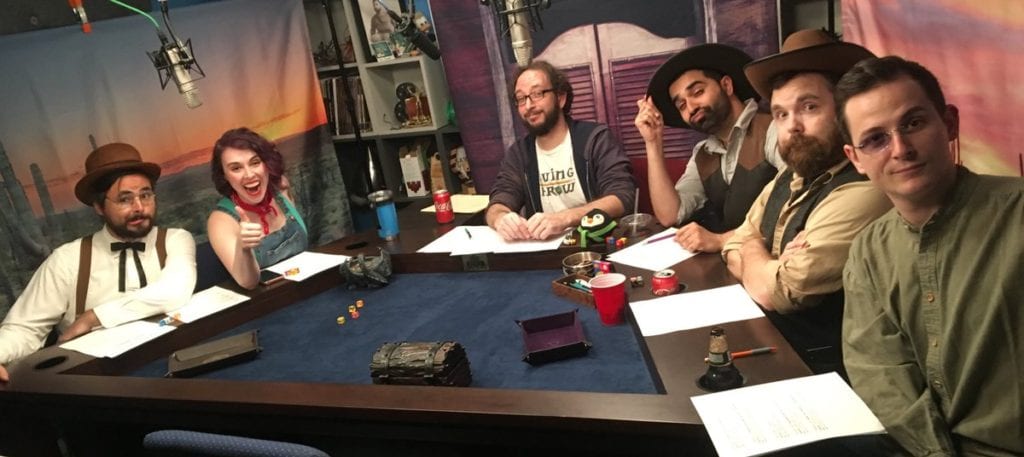
And don’t forget, we have the perfect table for aspiring streamers – our Streamer Game Table is shaped and set up for ideal camera angles while hiding wires and providing ample space for four players and a DM to all be in the same shot. If you’d like to learn more, email info@carolinagametables.com to schedule a consultation.



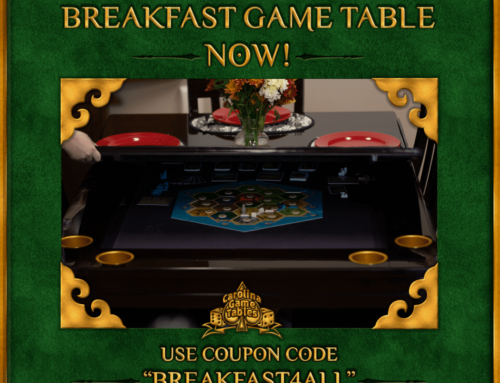
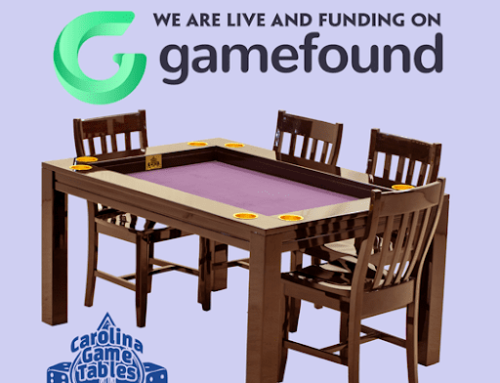
Leave A Comment